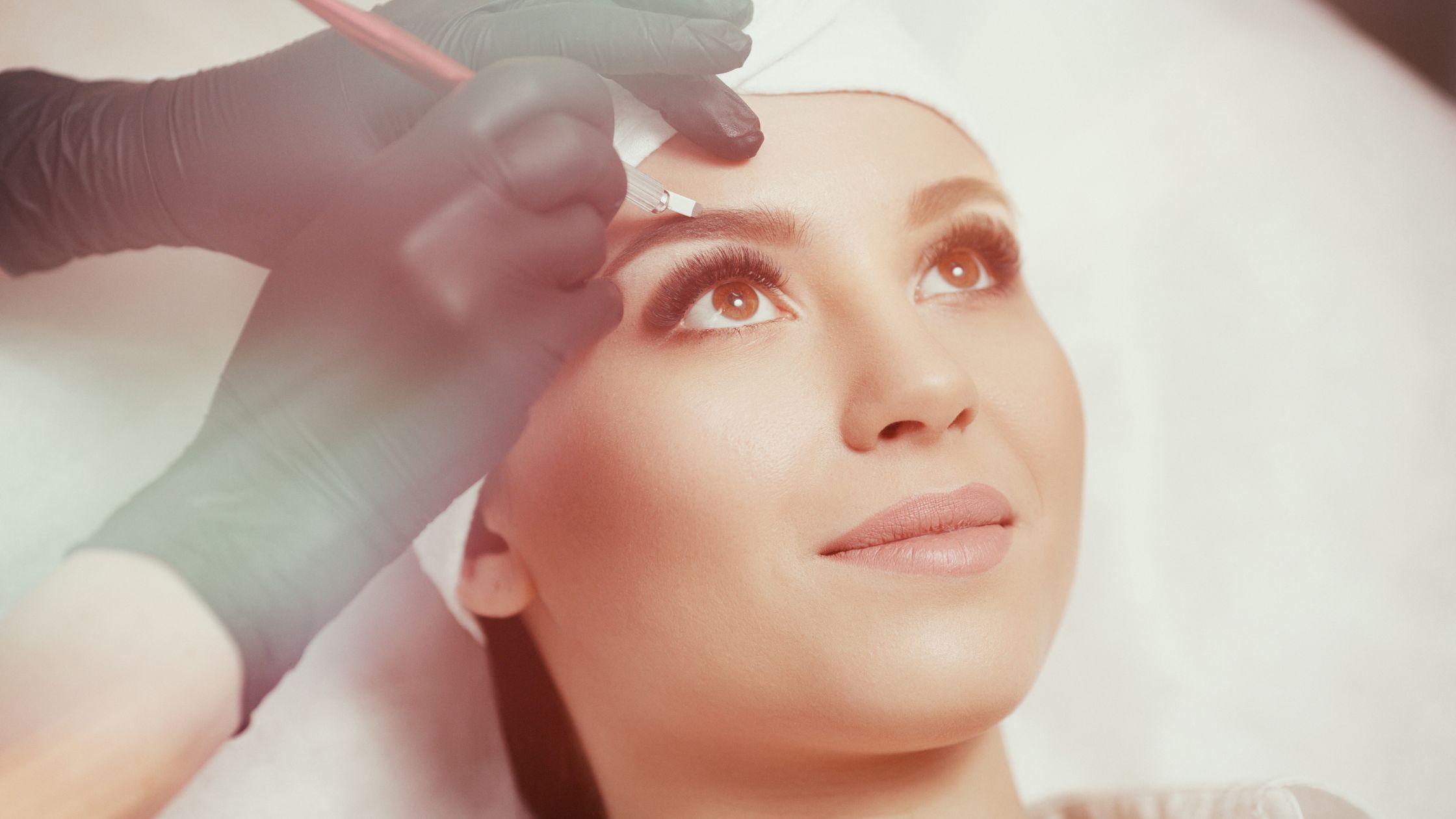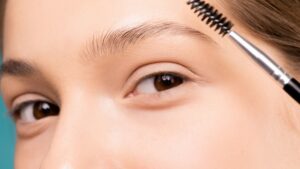Been thinking of getting an eyebrow makeover? Well, with all of the popular eyebrow trends out there, it can be hard to decide which one is perfect for you. After all, getting such a procedure done is not exactly cheap, so you want to make sure you’re choosing the right one!
As fellow beauty junkies, we understand your dilemma. To help you out, we’re breaking down the differences amongst three of today’s most popular eyebrow trends—micro ombré, microblading, and ombré powder brows.
Keep reading to find out everything you need to know about each of these trends, including what they are, how they’re done, and what each one can do for your brows!
What Is Microblading?
Let’s start with perhaps, the mother of all these eyebrow trends: microblading. Microblading is a form of semi-permanent tattooing that creates the illusion of fuller, natural-looking brows.
The procedure is done by using microblades—fine, sterile needles of varying sizes—to deposit pigment into the epidermis (the uppermost layer of the skin). This is what gives microbladed brows their natural, hair-like strokes.
What Are Ombré Powder Brows?
Just like microblading, microshading or the ombré powder brows treatment is also a form of semi-permanent makeup. The main difference between microshading and microblading is that the latter uses a manual tool, whereas microshading uses a machine to deposit pigment into the skin.
Furthermore, the process of microshading is more focused on filling in the brows to create a powdery, diffused look—hence the name “powder brows.” This is what sets it apart from microblading, which creates more defined, individual strokes that look like actual hairs.
What Is Micro Ombré?
Imagine those two treatments combined and you’ll get micro ombré brows.
Micro ombré is a semi-permanent makeup treatment that uses both microblading and microshading techniques to create fuller, more defined brows. The result is a set of brows that look very natural but with a little more oomph than your regular microbladed brows. With the hair-like strokes and diffused filling, micro ombré gives you the best of both worlds!
Which Treatment Is the Least Painful?
Alright, that’s pretty understandable. No one likes needles poking into their skin—even if it is for the sake of beauty.
Thankfully, all three treatments are relatively pain-free, or perhaps only entail very little pain. This is because while they all involve needles, no procedure begins without first numbing the area with a topical anesthetic. And since they are usually done within an hour or so, the numbing effect should last throughout the entire treatment.
Nonetheless, if you’re really curious about which one hurts the least, then we’d say ombré powder brows or microshading probably has the edge here. This is because the needles used in shading do not really go as deep into the skin as microblades do.
Micro ombré, on the other hand, would likely be the most painful of the three, given that it involves both microblading and microshading. But like we said, with numbing cream, the pain should be manageable. Plus, we’re certain you’ll forget any discomfort once you see the final result!
Which One Is the Cheapest?
There’s no easy answer when it comes to the cost of these treatments. This is because the price will ultimately depend on factors such as your chosen studio, the artist’s experience, and your location.
In general, microblading is often the cheapest option. A quick search on Google shows that microblading services can cost anywhere between $200 and $800.
Ombré powder brows and micro ombré, on the other hand, are usually on the pricier side. This is because they usually require more time and effort to complete. You can expect to pay anywhere between $400 and $1,200 for these treatments.
Which Treatment Gives the Best Results?
The answer here really depends on your personal preferences.
If you want subtle, natural-looking brows with hair-like strokes, then microblading is probably your best bet. If you want something that looks a little more dramatic and filled-in, then microshading or micro ombré might be more up your alley.
The real key to getting the best results is to find a reputable artist who can create the look you want. Whether you go for microblading, microshading, or micro ombré, make sure you do your research and pick a studio or artist that you trust!
Which Treatment Has the Longest Lasting Results?
When it comes to longevity, all three treatments can last anywhere from 1 to 3 years. However, microblading tends to have the shortest lifespan, while microshading and micro ombré can last a little longer.
This is because the shading effect of microshading and micro ombré can stay noticeable for a longer period of time, even as the pigment begins to fade. With microblading, on the other hand, the strokes can start to blur and disappear as the pigment fades (which would only happen, of course, if you don’t get a touch-up).
I Have Oily Skin, Which One Should I Choose?
Micro ombré and ombré powder brows are usually better suited for those with oily skin. With the added shading, these treatments can help create a more powdery and matte finish that can last all day—even in the face of sweat and oil!
Moreover, pigment does not usually hold as well on oily skin, so if you’ve only got those microblading hair-strokes, you may notice the changes more quickly.
I Have Very Dry Skin, Which One Do I Choose?
Pigments work best on dry to normal skin. Hence, you can technically choose any of the three treatments if you’ve got dry skin.
However, take note that any of these should be done with precaution, especially to those with unique skin conditions. Thus, if the dryness of your skin is quite severe, it’s always best to consult with your dermatologist and artist first before going ahead with the treatment.
What’s the Healing Process Like for Each Treatment?
All three entail a 14 to the 28-day healing process. During this time, it is important that you avoid activities that can irritate or disturb your brows—this means no swimming, saunas, or strenuous workouts! You should also avoid picking or scratching at your brows, as this can cause the pigment to fade or become patchy.
In general, microblading has the shortest and easiest healing process. In fact, some people who get the treatment are already free from any post-procedure redness or swelling after just a day or two. Microshading and micro ombré, however, can take a little longer to heal.
Nonetheless, as long as you follow the proper aftercare instructions, you should be able to heal just fine!
What Are the Side Effects of Each Treatment?
As mentioned, you can expect some post-treatment redness and swelling—this is totally normal!
There is also a chance that your brows might be a little darker than usual right after the treatment. This is because the microblading or shading pigment is still settling into your skin, and will eventually lighten up to its true color within a few days.
In very rare cases, people might experience an allergic reaction to the pigment or ink. If this happens, you will likely experience itching, redness, and swelling around the microbladed or shaded area. If you encounter any of these side effects, it’s best to consult with your artist right away.
How Long Does Each Treatment Take?
Microblading and ombré powder brows usually take around 1 to 3 hours to complete. Micro ombré, as you may have guessed, can take longer because both methods are being done in one session.
Is There Any Downtime After Each Treatment?
As mentioned, the first one to two weeks after your treatment is considered the healing period. During this time, it is best to just care about your brows and let them recover. Hence, if possible, avoid some of your usual activities that expose you to too much sun, sweat, or water.
How Often Should I Get Each Treatment Done?
After your very first treatment—whether it’s microblading, microshading, or micro ombré—you will be asked to come back for a touch-up appointment 4 to 6 weeks later. This is because it takes some time before the pigment sets in and your microbladed or shaded brows fully heal.
After your initial touch-up, you can then opt to get microblading, microshading, or micro ombré done once every two years. However, take note that the longevity of each treatment still depends on your skin type, age, and lifestyle. If you have very oily skin or live an active lifestyle, the pigment might not last as long.
Which Is the Right One for Me?
And we’re down to the last question! Which of these three treatments is right for you?
Given all the info we’ve discussed above, the ball is now in your court. All you need is to consider several factors such as your style, budget, and skin type before making a decision. We’re sure that whichever treatment you choose, you’ll be more than happy with your fabulous new brows!
Give Yourself That Eyebrow Makeover Today!
That’s a wrap! We hope this article has helped you learn more about microblading, microshading, and micro ombré. Just remember, no matter which treatment you choose, the most important thing is to entrust your brows to a reputable and experienced microblading artist.
And if you’re still looking for one, send us a message or book an appointment and we’ll introduce you to our microblading experts here at BrowBeat!
More like this:
What Are Combre Brows? 8 Things You Need To Know About This Awesome Trend
Feather Brows Vs. Classic Microblading: How To Pick Your Next Treatment With These 5 Interesting Key Differences
Is PMU Microblading Worth the Hype? 10+ Benefits Uncovered
Eyebrow tattoo near me in Dallas 2022
Pointillism Microblading: How To Perfect the Technique With These 7 Tips
Microblading Stippling What No One Talks About—Plus 6 Tips To Master The Technique
Terrified of Botched Eyebrows? Here Are 9 Quick Tips To Avoid and Correct Them!
Lip Care 101: Your Ultimate Guide to Having That Perfect Pout
9 Popular Eyebrow Treatments: Finding Your Perfect Fit
9 Alarming Reasons Why You Might Need Microblading Color Correction



